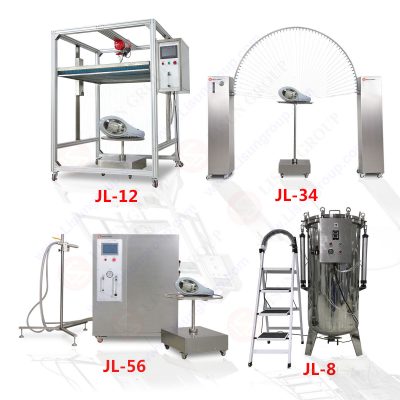

Abstract
Water quality testing equipment is often exposed to challenging environments, including water, dust, and humidity. Ensuring the equipment’s durability and reliability requires stringent waterproof testing based on IP (Ingress Protection) standards. This article examines the waterproof testing methodologies for enclosures, focusing on the LISUN JL-X IP Waterproof Test Equipments. Through detailed analysis and illustrative data, we explore the testing procedures, IP ratings, and their implications for water quality testing equipment.
1. Introduction
Water quality testing equipment plays a critical role in monitoring and ensuring water safety across industries. These devices are often deployed in harsh environments, requiring robust protection against water ingress. This necessitates rigorous waterproof testing to verify their compliance with international IP standards. The LISUN JL-X IP Waterproof Test Equipments offer a reliable solution for such evaluations.
This paper delves into the importance of waterproof testing, the functionality of LISUN JL-X equipment, and the specific IP ratings required for water quality testing equipment to operate effectively in real-world conditions.
2. Overview of IP Ratings
IP (Ingress Protection) ratings are internationally recognized standards defined by the IEC 60529. These ratings evaluate the level of protection an enclosure offers against solids and liquids. The two-digit code indicates:
• First digit: Protection against solid particles (e.g., dust).
• Second digit: Protection against liquids (e.g., water).
IP Code
Protection Against Solids
Protection Against Liquids
IPX0
No protection
No protection
IPX4
Protected against splashing water
IPX7
Protected against immersion (1 meter)
IPX8
Protected against submersion
3. LISUN JL-X IP Waterproof Test Equipments
The LISUN JL-X IP Waterproof Test Equipments are designed to test the waterproofing capabilities of enclosures under varying conditions. This equipment supports tests for IPX1 to IPX8 ratings, making it ideal for water quality testing equipment that requires high reliability in wet environments.
Key Features
• Adjustable Water Pressure and Flow: Simulates different water exposure scenarios.
Rotating Sprinklers: Suitable for splash and spray tests (IPX3/IPX4).
• Immersion Tanks: Enables testing for IPX7 and IPX8 ratings.
• Compliance: Meets IEC 60529 standards.
waterproof test Equipment JL-X
4. Testing Procedures and Standards
4.1. IPX3 and IPX4: Spray and Splash Resistance
These tests are critical for water quality testing equipment exposed to rain or splashing water. The LISUN JL-X uses rotating arms with precisely positioned nozzles to spray water at specific angles and pressures.
Parameter
Value for IPX3
Value for IPX4
Spray Angle
60°
180°
Water Pressure
50-150 kPa
50-150 kPa
Test Duration
10 minutes
10 minutes
4.2. IPX7: Temporary Immersion
For devices submerged in water, IPX7 testing involves placing the equipment in a water tank for 30 minutes at a depth of 1 meter. The LISUN JL-X immersion tank ensures uniform pressure and temperature conditions.
Parameter
Value
Immersion Depth
1 meter
Duration
30 minutes
4.3. IPX8: Continuous Submersion
This test is tailored for water quality testing equipment that operates underwater. The LISUN JL-X offers customizable depth and duration settings to evaluate extended immersion performance.
Parameter
Value
Depth Range
Up to 3 meters
Duration
Customized
5. Case Study: Waterproof Testing for Water Quality Testing Equipment
A water quality sensor was tested using the LISUN JL-X for IPX7 compliance. The test involved submerging the device at a depth of 1 meter for 30 minutes. Post-test inspections revealed no water ingress, validating the sensor’s IPX7 rating and its reliability in wet conditions.
Test Data:
Test Parameter
Specification
Outcome
Water Depth
1 meter
Passed
Test Duration
30 minutes
Passed
Inspection
No water ingress
Passed
6. Implications for Water Quality Testing Equipment
6.1. Enhanced Durability
Waterproof testing ensures that equipment remains operational under extreme environmental conditions. This is crucial for applications such as field monitoring and wastewater analysis.
6.2. Regulatory Compliance
Complying with IP standards enhances the marketability of water quality testing equipment by meeting industry requirements.
6.3. Cost-Effectiveness
By identifying design flaws early, waterproof testing reduces the risk of equipment failure, saving costs associated with repairs and replacements.
7. Conclusion
Waterproof testing is indispensable for ensuring the reliability and durability of water quality testing equipment. The LISUN JL-X IP Waterproof Test Equipments provide comprehensive solutions for evaluating various IP ratings, from splash resistance to extended submersion.
By leveraging these advanced testing methodologies, manufacturers can deliver robust products that meet stringent environmental standards, ensuring optimal performance in real-world applications.
References
LISUN Group. Waterproof Test Equipments. Retrieved from LISUN Official Website.
IEC 60529: Degrees of Protection Provided by Enclosures (IP Code). https://www.lisungroup.com/news/technology-news/evaluating-enclosure-protection-for-water-quality-testing-equipment-a-focus-on-waterproof-testing-standards.html
.jpg)
Comments
Post a Comment